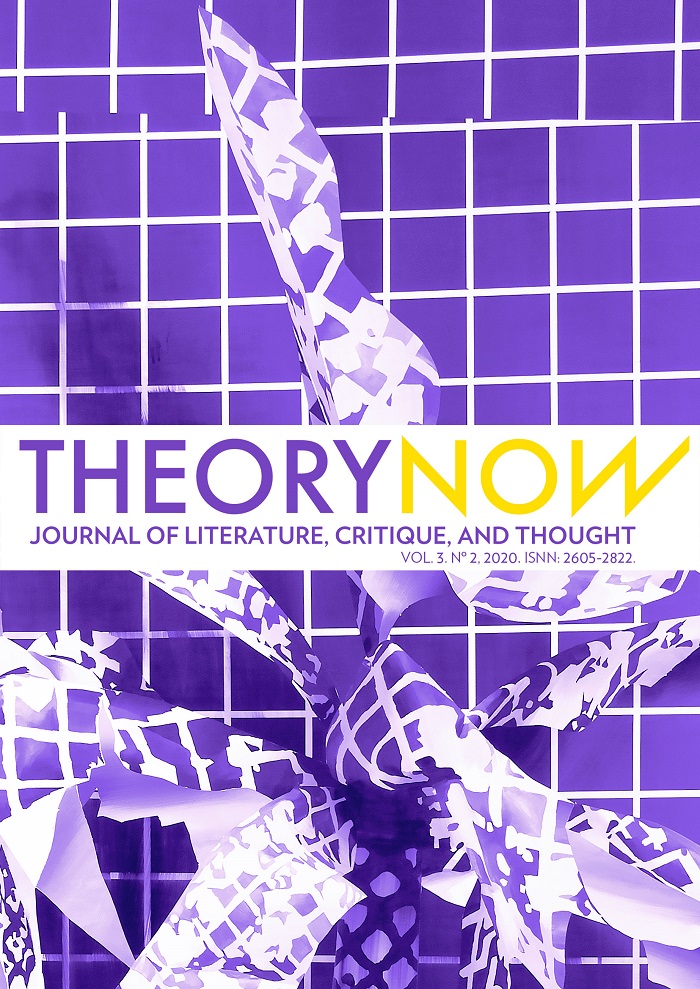Between the partage du sensible and the image critique. About a discussion between Jacques Rancière and Georges Didi-Huberman
DOI:
https://doi.org/10.30827/tnj.v3i2.15141Keywords:
Jacques Rancière, Georges Didi-Huberman, theory of images, dialectical image, distribution of the sensible, people, RomanticismAbstract
The aim of this article is to offer the lines of discussion that Jacques Rancière and Georges Didi-Huberman have been holding for some years now. From the interpellation that Didi-Huberman in 2013 to Rancière, we go through the texts in which they have been taking a position, in order to delineate the crosses and distancing between the two approaches. An approach to images ultimately indebted to the Schillerian free play as an instrument for putting in suspension the order and as a prefiguration of an emancipated community, and one that comes from an anthropological perspective enriched by psychoanalysis, phenomenology and dialectics where attention to “sensitive crystallizations” is the starting point.Downloads
References
Cabello, Gabriel. “Figura. Para acercar la Historia del Arte a la Antropología”. Revista Sans Soleil. Estudios de la imagen, vol. 5, no.1, 2013, pp. 6-17.
Didi-Huberman, Georges. La peinture incarnée. París, Minuit, 1985.
Didi-Huberman, Georges. Lo que vemos, lo que nos mira. Buenos Aires, Manantial, 1997. [Ce que nous voyons, ce qui nous regarde. París, Minuit, 1992.]
Didi-Huberman, Georges. “Pour une anthropologie des singularités formelles. Remarque sur l’invention warburgienne”. Genèses, no. 24, 1966, pp. 145-163.
Didi-Huberman, Georges. Ante el tiempo. Historia del arte y anacronismo de las imágenes. Buenos Aires, Adriana Hidalgo Editora, 2011. [Devant le temps. Histoire de l’art et anachronisme des images. París, Minuit, 2000.]
Didi-Huberman, Georges. Imágenes pese a todo. Memoria visual del holocausto. Barcelona, Paidós, 2004. [Images malgré tout. París, Minuit, 2003.]
Didi-Huberman, Georges. Atlas. ¿Cómo llevar el mundo a cuestas? Madrid, MNCARS, 2011.
Didi-Huberman, Georges. Pueblos expuestos, pueblos figurantes. Buenos Aires, Manantial, 2014. [Peuples exposés, peuples figurants. París, Minuit, 2012.]
Didi-Huberman, Georges. “Volver sensible/hacer sensible”. VVAA. ¿Que es un pueblo? Buenos Aires, Eterna Cadencia Editora, 2014, pp. 69-100. [“Rendre sensible”.
Didi-Huberman, Georges. VVAA, Qu’est-ce qu’un peuple? París, La fabrique, 2013, pp. 77-114.]
Didi-Huberman, Georges. Insurrecciones. MNAC/Jeu de Paume, 2017. [Soulèvements. París, Éditions Gallimard/Jeu de Paume, 2016.]
Didi-Huberman, Georges. “Les émotions en partage”. Georges Didi-Huberman, Désirer désobeir. Ce qui nous soulève, 1. París, Minuit, 2019, pp. 293-302.
Didi-Huberman, Georges. “Leer, una y otra vez, lo que nunca ha estado escrito”. Daniel Lesmes, Gabriel Cabello, Jordi Massó (eds.). Georges Didi-Huberman, Imágenes, Historia, Pensamiento. Anthropos, no. 246, 2017, pp. 113-132. [“Lire, encore et toujours, ce qui n’a jamais été écrit”. Emmanuel Alloa (éd.), Penser l’image III. Comment lire les images? Dijon, Les presses du réel, 2017, pp. 369-391.]
Didi-Huberman, Georges. “Postface. L’inherence, l’oeil et les vies du couteau. Retour sur l’informe et la dialectique”. Georges Didi-Huberman, La Ressemblance informe. París, Macula, pp. 422-480.
Massó Castilla, Jordi. “Las paradojas de la Historia del arte”. Daniel Lesmes, Gabriel Cabello, Jordi Massó (eds.), Georges Didi-Huberman, Imágenes, Historia, Pensamiento. Anthropos, no. 246, 2017, pp. 101-112.
Rancière, Jacques. La nuit des prolétaires. Archives du rêve ouvrier. París, Fayard, 1981.
Rancière, Jacques. El maestro ignorante. Cinco lecciones sobre la emancipación intelectual. Barcelona, Laertes, 2002. [Le maître ignorant: Cinq leçons sur l'émancipation intellectuelle. París, Fayard, 1987.]
Rancière, Jacques. El reparto de lo sensible. Estética y política. Santiago de Chile, LOM ediciones, 2009. [Le partage du sensible. Esthétique et politique. París, La fabrique, 2000.]
Rancière, Jacques. El destino de las imágenes. Buenos Aires, Prometeo Libros, 2011. [Le destin des images. París, La fabrique, 2003.]
Rancière, Jacques. El espectador emancipado. Buenos Aires, Manantial, 2010. [Le spectateur émancipé. París, La fabrique, 2008.]
Rancière, Jacques. “Les images veulent-elles vraiment vivre?”. Emmanuel Alloa (éd.), Penser l’image, Dijon, Les presses du réel, 2011, pp. 249-263.
Rancière, Jacques. El hilo perdido. Ensayos sobre la ficción moderna. Buenos Aires, Manantial, 2015. [Le fil perdu. Essais sur la fiction moderne. París, La fabrique, 2014.]
Rancière, Jacques. “Un levantamiento puede esconder otro”. Georges Didi-Huberman (éd.), Insurrecciones. MNAC/Jeu de Paume, 2017, pp. 55-60. [“Un soulèvement peut en cacher un autre”. Georges Didi-Huberman (éd.) Soulèvements. París, Éditions Gallimard/Jeu de Paume, 2016, pp. 63-70.]
Rancière, Jacques. “Images relues: la méthode de Georges Didi-Huberman”. Emmanuel Alloa (éd.), Penser l’image III. Comment lire les images?, Dijon, Les presses du réel, 2017, pp. 351-368.
Weigel, Sigrid. Cuerpo, imagen y espacio en Walter Benjamin: una relectura. Buenos Aires, Paidós, 1999. [Body- and image-space. Re-reading Walter Benjamin. Londres/Nueva York, Routledge, 1996.]
Weigel, Sigrid. Walter Benjamin. Images, the Creaturly, and the Holy. Stanford, Stanford University Press, 2013.
Weigel, Sigrid. “The readability of images (and) of history”. Angelaki. Journal of the theoretical humanities, vol. 3, no. 4, 2018, pp.42-46.
Downloads
Published
How to Cite
Issue
Section
License
Theory Now. Journal of Literature, Critique, and Thought is an immediate open-access publication which is available at no cost for readers and authors alike. Authors are not charged any kind of fee for the editorial processing of their articles. Reading, downloading, copying, distributing, printing, searching, linking or reusing all published articles for non-commercial uses is allowed on the condition of citing the author, the journal and the editing body. All intellectual material published in this journal is protected under a Creative Commons Attribution-NonCommercial 3.0 Spain license.
Dissemination of the articles in social (Facebook, Twitter, Linkedin, etc.) and scientific networks (ResearchGate, Academia.edu, etc.), public repositories at universities and other institutions, blogs, personal or institutional websites, Google Scholar, ORCID, ResearchID, ScopusID, etc. is strongly encouraged. In all cases, the intellectual property of the articles and any possible monetary profits derived from them belong exclusively to the authors.













